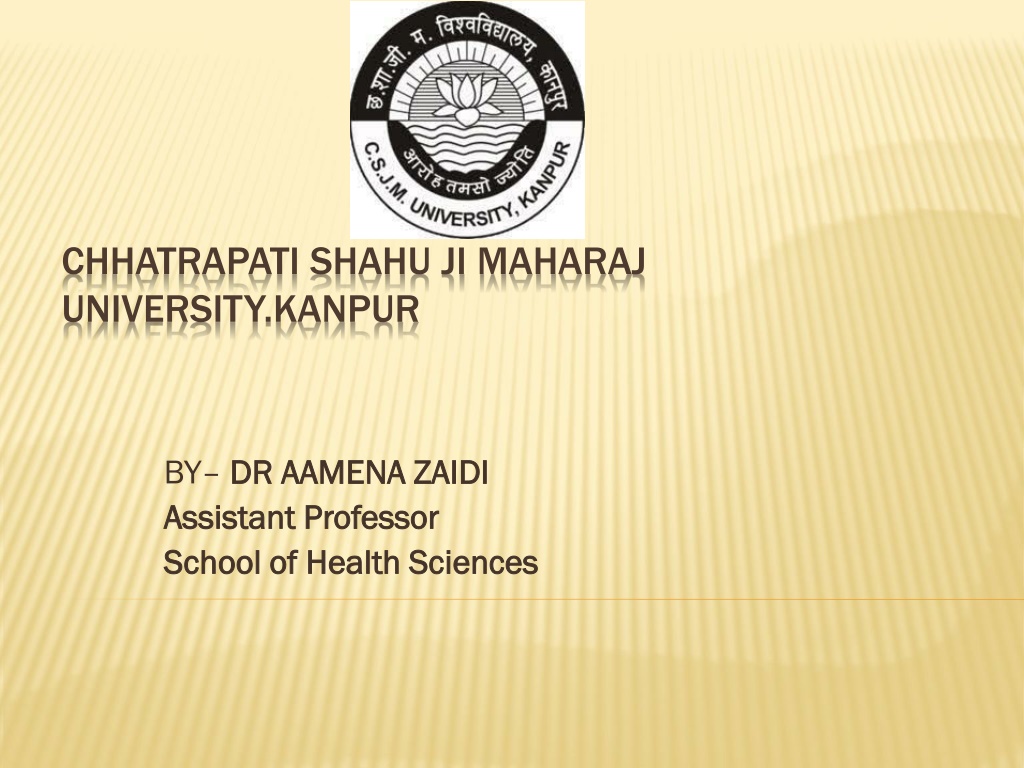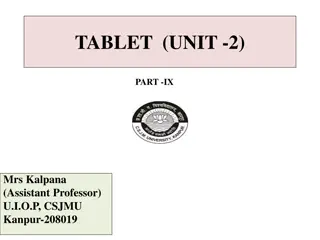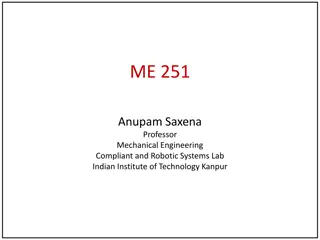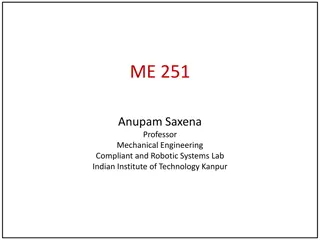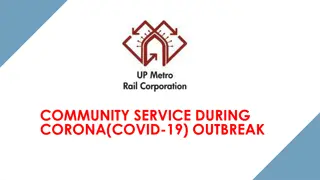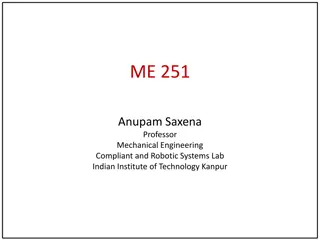CHHATRAPATI SHAHU JI MAHARAJ UNIVERSITY.KANPUR
Atherosclerosis is a condition where artery walls thicken due to a buildup of fatty material, leading to restricted blood flow and potential complications like blood clot formation. Learn about the causes, symptoms, and treatment options for atherosclerosis to maintain heart health and prevent serious consequences.
Download Presentation

Please find below an Image/Link to download the presentation.
The content on the website is provided AS IS for your information and personal use only. It may not be sold, licensed, or shared on other websites without obtaining consent from the author.If you encounter any issues during the download, it is possible that the publisher has removed the file from their server.
You are allowed to download the files provided on this website for personal or commercial use, subject to the condition that they are used lawfully. All files are the property of their respective owners.
The content on the website is provided AS IS for your information and personal use only. It may not be sold, licensed, or shared on other websites without obtaining consent from the author.
E N D
Presentation Transcript
CHHATRAPATI SHAHU JI MAHARAJ UNIVERSITY.KANPUR BY DR AAMENA ZAIDI DR AAMENA ZAIDI Assistant Professor Assistant Professor School of Health Sciences School of Health Sciences
ATHEROSCLEROSIS ATHEROSCLEROSIS CONTENT . Introduction . Causes . Symptom . Diagnose . Complications . Treat . Diet for atherosclerosis
INTRODUCTION NTRODUCTION Atherosclerosis [also know as arteriosclerotic vascular disease or ASVD] . The condition in the which an artery wall thickens as the result of a build- up of fatty material such as cholesterol . . Affecting arterial blood vessels , a chronic inflammatory response in the wall of arteries . . Its is commonly referred to as a hardening or furring of the arteries . . Its is caused by the formation of multiple plaques within the arteries .Its can restrict blood flow . These plaques can also burnt , causing Causes blood clot
A build up of cholesterol plaque in the walls of arteries, causing obstruction of blood flow. Plaques may rupture, causing acute occlusion of the artery by clot. Atherosclerosis often has no symptoms until a plaque ruptures or the build-up is severe enough to block blood flow. A healthy diet and exercise can help. Treatments include medication, procedures to open blocked arteries and surgery.
CAUSES CAUSES Atherosclerosis starts with damage or injury to the inner layer of an artery. The damage may be caused by . High blood pressure . High cholesterol . An irritant, such as nicotine . Certain diseases , such as diabetes
Step in atherosclerosis development Fatty streak Fibrous plaque Calcification plaques Atheromsa
SYMPTOMS SYMPTOMS If you have atherosclerosis in the arteries leading to your brain, you may have signs and symptoms such as sudden numbness or sudden numbness or weakness in your arms or legs weakness in your arms or legs, difficulty speaking or slurred speech, temporary loss of vision in one eye, or drooping muscles in your face.
SYMPTOM SYMPTOM You might not have symptoms until your artery is nearly closed or until you have a heart attack or stroke. Symptoms can also depend on which artery is narrowed or blocked. Symptoms related to your coronary arteries include: Arrhythmia, an unusual heartbeat Pain or pressure in your upper body, including your chest, arms, neck, or jaw.
Symptoms related to the arteries that deliver blood to your brain include: Numbness or weakness in your arms or legs A hard time speaking or understanding someone who s talking Drooping facial muscles Severe headache
RISK FACTORS FOR ATHEROSCLEROSIS RISK FACTORS FOR ATHEROSCLEROSIS Atherosclerosis starts when you re young. Research has found that even teenagers can have sign these risk factors are behind more than 90% of all heart attacks: Abdominal obesity ("spare tire") High blood pressure High cholesterol Not eating fruits and vegetables Not exercising regularly Smoking
DIAGNOSE ATHEROSCLEROSIS DIAGNOSE ATHEROSCLEROSIS Doctors have an arsenal of diagnostic tests and tools they can access to confirm the presence of Atherosclerosis These include an angiogram angiogram (Arteriogram), cholesterol tests, a chest x-ray, a CT (computed tomography) Blood test an exercise stress test
Lifestyle changes: Lifestyle changes: You can slow or stop atherosclerosis by taking care of the risk factors. That means a healthy diet, exercise, and no smoking. These changes won't remove blockages, but they re proven to lower the risk of heart attacks and strokes Fibrinolytic Fibrinolytic therapy: therapy: A drug dissolves a blood clot that s blocking your artery.
COMPLICATIONS OF ATHEROSCLEROSIS COMPLICATIONS OF ATHEROSCLEROSIS Complications of atherosclerosis include: Angina Chronic kidney disease Coronary or carotid heart disease Heart attack Peripheral artery disease Stroke Unusual heart rhythms
TREAT ATHEROSCLEROSIS TREAT ATHEROSCLEROSIS Medication: Medication: Drugs for high cholesterol and high blood pressure will slow and may even halt atherosclerosis. They lower your risk of heart at Bypass surgery: Bypass surgery: Your doctor takes a healthy blood vessel, often from your leg or chest, and uses it to go around a blocked segment. tack and stroke.
DIET FOR ATHEROSCLEROSIS DIET FOR ATHEROSCLEROSIS A heart healthy diet includes fruit , vegetable , whole grain ,fish , meat , nut ect - Rich omega 3 and fiber - Chia, flaxseed - Brown bread - Vitamin c Vitamin c orange, mango,tomato sauce
